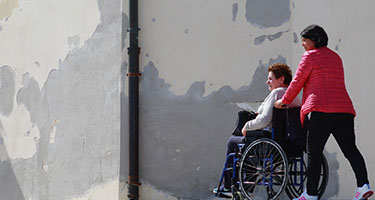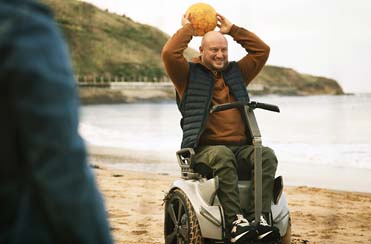Osteoporosis is a disease in which bones lose density and become brittle, making them very vulnerable to breaks and fractures. Normally, it’s a medical condition mostly associated with post-menopausal women over the age of 65. However, a spinal cord injury often causes the onset of the early stages of the disease, leading to rapid, and often severe, osteoporosis almost immediately. Osteoporosis after a spinal cord injury has been seen as little as six weeks later and can occur regardless of gender or age.

Image credit Yulissa
The good news is that only about six percent of those with a spinal cord injury have brittle bone-related fractures. You can avoid joining that statistic by understanding why spinal cord injuries can lead to osteoporosis, what you can do to prevent fractures and their painful, disruptive and costly consequences.
Causes of osteoporosis after a spinal cord injury
Several unique factors bring on osteoporosis after a spinal cord injury. A significant cause is the immobility of limbs. Without mechanical loading and weight put on limbs, the bones don’t have the normal stimulation that promotes bone-building cells.
That’s why bone loss usually occurs below the level of injury. The lumbar spine is the exception — it usually maintains a normal or even higher bone density due to the weight loading that comes from sitting in a wheelchair.
Although research continues to better understand why this happens, other known causes include:
- Sluggish blood flow to limbs
- Changes in hormones that help maintain bone formation
- Metabolic changes in the acidity of blood that plays a role in bone integrity
- Autonomic nervous system changes that disrupt bone formation processes
Also, poor lifestyle choices are a contributing factor. An unhealthy diet that lacks vital nutrients, an excessive alcohol and caffeine intake, and smoking can all accelerate osteoporosis progression.
Tips for managing osteoporosis after spinal cord injury
Although there’s no known method for preventing osteoporosis after a spinal cord injury, there are ways to manage this condition and avoid painful bone fractures and breaks.
- Stay on a healthy diet — avoid caffeine and alcohol
- If you’re a smoker, join a quit smoking group or seek advice from your GP
- Stay physically active — try an invigorating wheelchair sport or an aquatic activity that allows you to exercise your limbs with the help of water buoyancy
- Prevent falls by practising safe wheelchair use and transfers
- Work with an occupational therapist to keep your home safe with handrails, ramps, and other safety modifications — especially in bathrooms, bedrooms, and entryways
- Consider a standing wheelchair or device that can help you occasionally stand and put some weight on your lower limbs — consult with your healthcare team for available options
Depending on your osteoporosis severity, your medical team may also recommend prescription medication or treatments like functional electrical stimulation (FES) or low-intensity vibration.
For further personalised spinal cord injury guidance, our dedicated spinal cord injury support team can answer your spinal cord injury questions when you join our free Navigator service.








